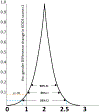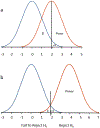P-Values and Power in Orthopedic Research: Myths and Reality
- PMID: 36162927
- PMCID: PMC9583694
- DOI: 10.1016/j.arth.2022.05.026
P-Values and Power in Orthopedic Research: Myths and Reality
Abstract
The results of statistical tests in orthopedic studies are typically reported using P-values. If a P-value is smaller than the pre-determined level of significance (eg, < .05), the null hypothesis is rejected in support of the alternative. This automaticity in interpreting statistical results without consideration of the power of the study has been denounced over the years by statisticians, since it can potentially lead to misinterpretation of the study conclusions. In this paper, we review fundamental misconceptions and misinterpretations of P-values and power, along with their connection with confidence intervals, and we provide guidelines to orthopedic researchers for evaluating and reporting study results. We provide real-world orthopedic examples to illustrate the main concepts. Please visit the followinghttps://youtu.be/bdPU4luYmF0for videos that explain the highlights of the paper in practical terms.
Keywords: P-value; arthroplasty; orthopedics; power; sample size; significance test.
Copyright © 2022 Elsevier Inc. All rights reserved.
Figures



References
Publication types
MeSH terms
Grants and funding
LinkOut - more resources
Full Text Sources

